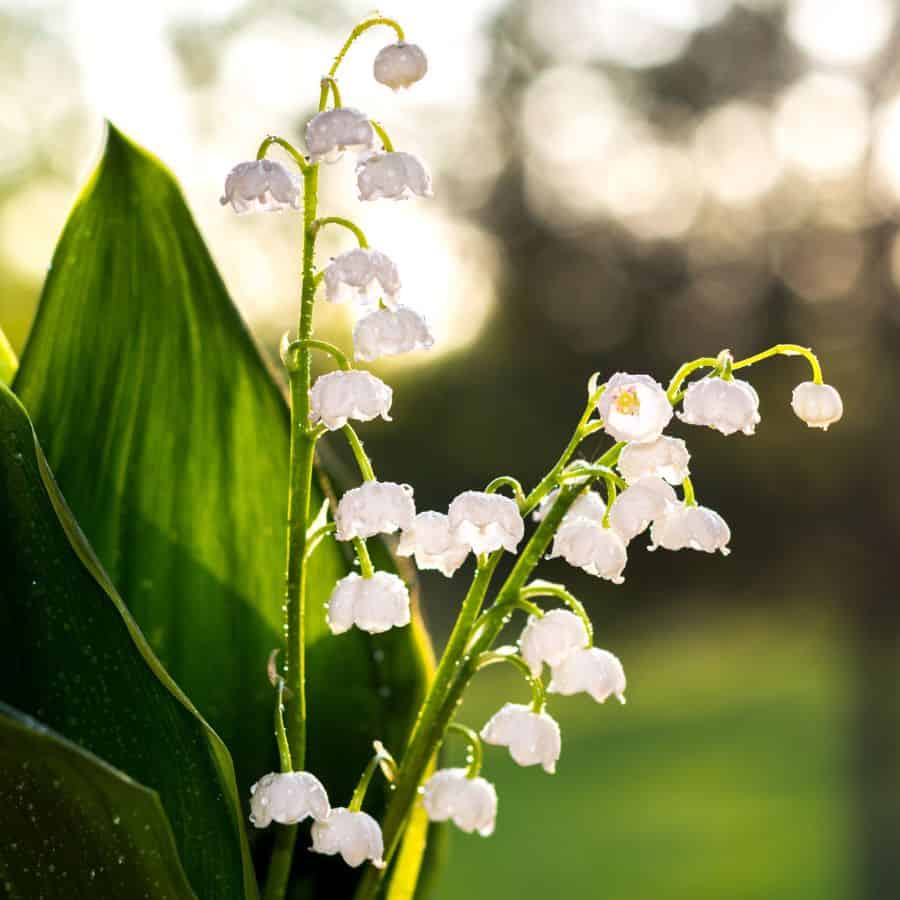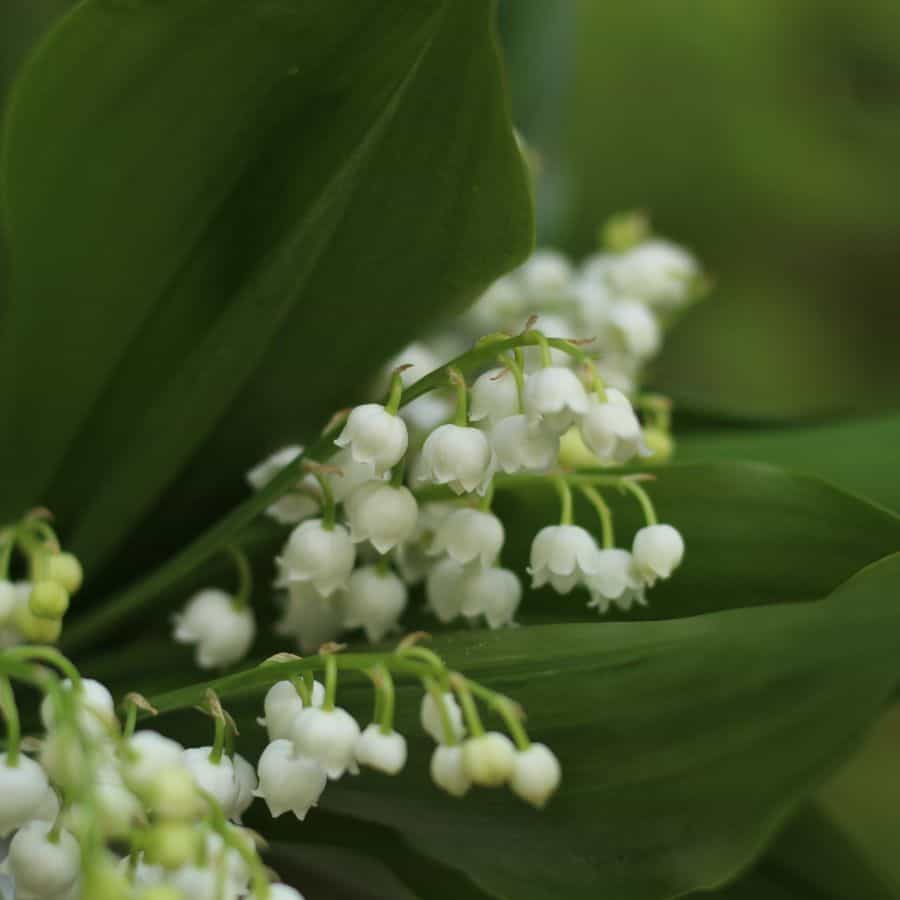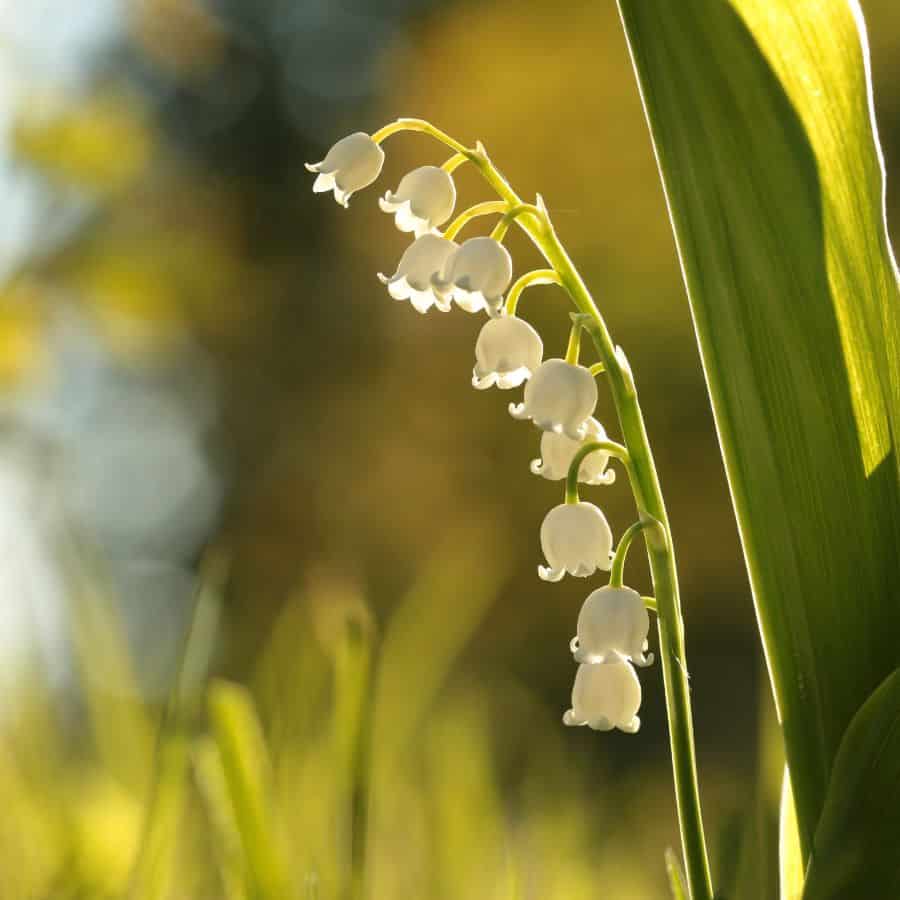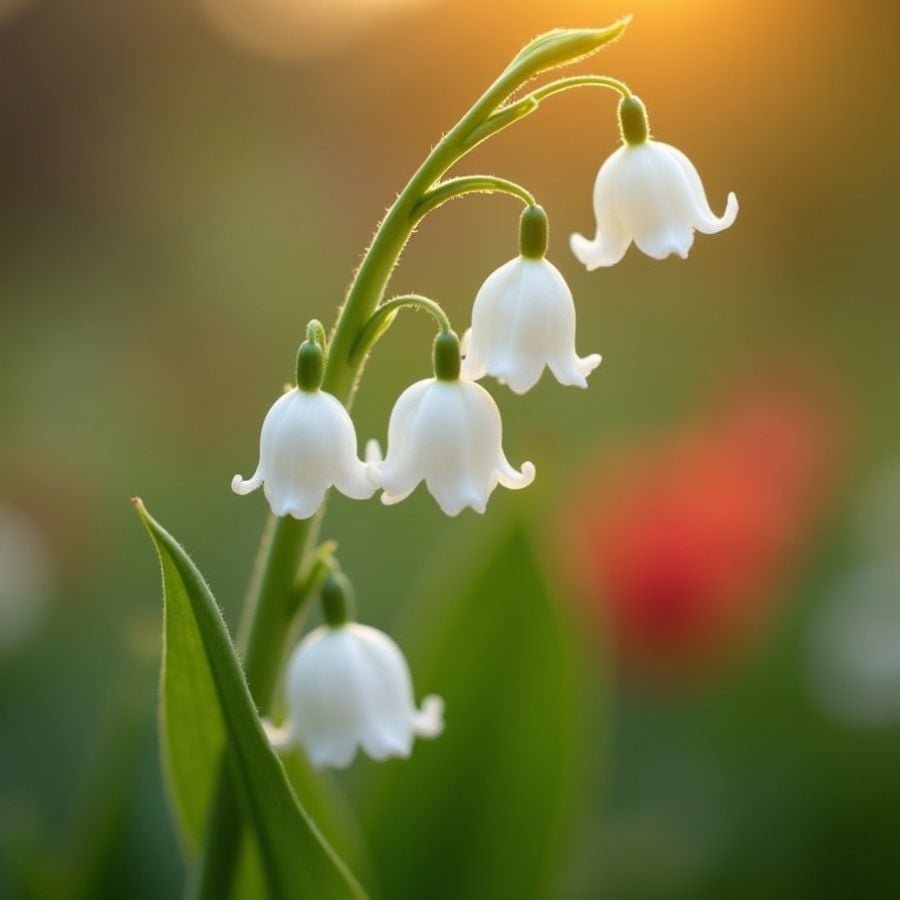Those delicate white bells nodding in the breeze aren’t just pretty faces. Lily of the Valley packs a fragrant punch that can transform an ordinary garden corner into something magical.
But here’s the thing: this enchanting woodland beauty can be either your garden’s crowning jewel or its frustrating failure.
The difference? Just a few insider secrets that I’m about to spill.
The Secret Location That Makes These Beauties Explode With Blooms
Forget what you’ve heard about planting these delicate flowers wherever you have space. Your lily of the valley is trying to tell you something important: location is EVERYTHING.
These woodland natives are shade lovers at heart, acting like the vampires of the plant world. Too much direct sunlight and they’ll shrivel faster than you can say “oops.”

The game-changer for your lily of the valley isn’t what you think. It’s finding that sweet spot of dappled shade.
- Partial shade paradise: Morning sun with afternoon protection is ideal
- Well-draining soil: They want moisture without the soggy feet
- Rich organic matter: Think forest floor – these aren’t desert plants!
I was shocked to discover that lily of the valley actually communicates its happiness through its leaves. When perfectly placed, their foliage becomes a lush, glossy green that’s almost as stunning as their flowers.
Plant Like a Pro: Timing Is Everything
Most people make this mistake with their lily of the valley: planting at the wrong time. Would you jump into a freezing lake in winter? Neither would these delicate beauties!
The optimal planting window is early spring or fall when soil temperatures are just right, like Goldilocks’ perfect porridge. Plant those pips (the small rhizome segments) about an inch deep and give them room to breathe, 2-3 inches apart minimum.
After planting, water thoroughly but gently. Think of it as tucking in a child – you want them comfortable, not drowning in blankets.
The Water-Fertilizer Balance That Creates Spectacular Blooms
The difference between amateur and pro plant parents is simply understanding the delicate dance between water and nutrients.
Lily of the valley craves consistent moisture like teenagers crave social media, regularly but not obsessively. Allow the top inch of soil to dry slightly between waterings to prevent the dreaded root rot that can decimate your plants overnight.
The Fertilizer Secret: A balanced, slow-release fertilizer applied just once in early spring is all these plants need. Overfeed them and you’ll get all leaves, no flowers, like giving a child too much candy and wondering why they won’t eat dinner.
Maintenance Magic: Simple Tricks for Vibrant Plants
Your lily of the valley patch requires minimal but strategic maintenance to stay spectacular year after year.
- Deadhead spent flowers to redirect energy (think of it as cutting off energy-draining distractions)
- Divide crowded clumps every 3-4 years to rejuvenate growth
- Monitor for pests like aphids. These tiny vampires can suck the life from your plants

The secret most plant experts won’t tell you is that a yearly division not only keeps plants healthy but gives you free plants to spread throughout your garden or share with friends. It’s like getting botanical interest on your investment!
Winter Survival: How to Shield Your Precious Plants
Think your lily of the valley is dead come winter? Think again! These resilient perennials are just taking their annual nap beneath the surface.
A 2-inch layer of organic mulch in late fall acts like a cozy blanket, protecting roots from temperature fluctuations that can stress plants.
Did you know that lily of the valley can survive temperatures as low as -30°F (-34°C) when properly protected? These tiny plants are tougher than they look!
Once winter sets in, hands off! The worst thing you can do is disturb their dormancy. Let them rest until spring’s warmth coaxes them back to life.
The Poisonous Beauty: Safety First
Here’s the dramatic plot twist: every part of lily of the valley is highly toxic if ingested. This stunning beauty has a deadly secret. It contains over 30 cardiac glycosides that can affect heart rhythm.
If you have curious pets or small children, consider growing these beauties in contained areas or choosing alternative plants. Nature’s most beautiful creations often come with thorns or, in this case, toxins.
From Struggling to Stunning: Your Action Plan
Ready to rescue your suffering lily of the valley or start a flourishing new patch? Here’s your simple action plan:
- Assess your current location – is it too sunny, too dry, or too wet?
- Plan to plant or transplant in early spring or fall
- Create rich, well-draining soil with added compost
- Water consistently, but allow slight drying between sessions
- Fertilize once yearly in early spring
- Provide winter protection with mulch

Follow these steps and watch as your lily of the valley transforms from mediocre to magnificent. These woodland wonders will reward your efforts with a fragrance so intoxicating, you’ll wonder why you ever bothered with store-bought air fresheners!

